By Vandana Shiva

“Seed must be in the hands of the farmers”; photographer unknown; courtesy of seedfreedom.in
At a time when mega corporations want to control our food, it is imperative that we stand together to protect our food, the planet and each other.
In this earth
in this earth
in this immaculate field
we shall not plant any seeds
except for compassion
except for love. — Rumi
The Declaration on Seed Freedom
Seed is the source of life; it is the self-urge of life to express itself, to renew itself, to multiply, to evolve in perpetuity, in freedom.
Seed is the embodiment of bio-cultural diversity. It contains millions of years of biological and cultural evolution of the past, and the potential of millennia of a future unfolding.
Read the rest of this article »
by M. K. Gandhi
Editor’s Preface: Several of our articles, most recently “Mahila Shanti Sena”, have made reference to Gandhi’s economic theory. The following compilation of quotes will give a flavor of his thinking. Please consult the note at the end for links regarding this aspect of Gandhi’s thought. JG
Economics & Ethics
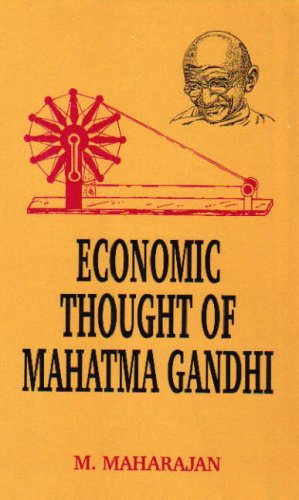
Book cover courtesy amazon.co.uk
I must confess that I do not draw a sharp or any distinction between economics and ethics. Economics that hurt the moral wellbeing of an individual or a nation are immoral and, therefore, sinful. Thus the economics that permit one country to prey upon another are immoral. (Young India, 13-10-1921, p. 325)
The economics that disregard moral and sentimental considerations are like wax works that, being life-like, still lack the life of the living flesh. At every crucial moment new-fangled economic laws have broken down in practice. And nations or individuals who accept them as guiding maxims must perish. (Young India, 27-10-1921, p. 344)
That economics is untrue which ignores or disregards moral values. The extension of the law of non-violence in the domain of economics means nothing less than the introduction of moral values as a factor to be considered in regulating international commerce. (Young India, 26-10-1924, p. 421)
Ideal Economy
According to me the economic constitution of India and, for that matter, the world should be such that no one should suffer from want of food and clothing. In other words, everybody should be able to get sufficient work to be able to make ends meet . . . And this ideal can universally be realized only if the means of production of the elementary necessaries of life remain in the control of the masses. These should be freely available to all as God’s air and water are or ought to be; they should not be made vehicle of traffic for the exploitation of others. This monopolization by any country, nation or group of persons would be unjust. The neglect of this simple principle is the cause of destitution that we witness today not only in this unhappy land but other parts of the world too. (Young India, 15-11-1928, p. 381)
Read the rest of this article »
by Anne Pearson
Are Gandhian ideals dead in India? Some people have thought so as India’s political leadership since India’s achievement of independence in 1947 has largely ignored Mahatma Gandhi’s prescriptions for economic, political and social development. Even so, apart from such notable figures as Vinoba Bhave and Jayaprakash Narayan, both of whom led mass movements for social change respectively in the 1960s and ’70s, there have been some stalwart Gandhians who have continued to attempt to put the Mahatma’s ideals into practice. One of these figures is 91-year-old Acharya Ramamurti, a man who in his twilight years has recently inaugurated a new social movement aimed at integrating village and district level democracy with nonviolence and the rights of women. His nonpartisan movement has been meeting with spectacular success. Tens of thousands of women have now been trained in a women’s peace corps and their collective efforts are beginning to change the social and political climate in parts of northern India.
Gandhi’s Call to Women
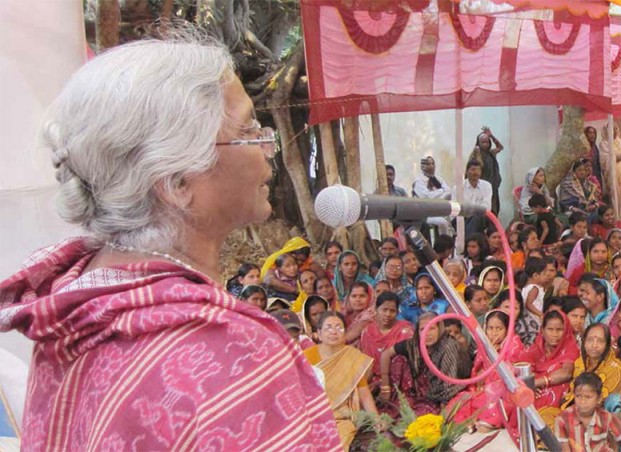
Mahila Shanti Sena conference, Bihar 2001; courtesy of McMaster University
Gandhi had long believed that women had special capacities for sacrifice and for leadership in peace building. He thought that the world had been too long dominated by “masculine” aggressive qualities and that it was time that the “feminine” qualities came to the fore. He wrote: “Nonviolence is woman’s inborn virtue. For ages man has been trained in violence. To become nonviolent they will have to generate womanly qualities. Since I have adopted nonviolence, I am myself becoming womanly day by day. Women are accustomed to making sacrifices for the family. They will now have to learn to make an offering for the country. I am inviting all women… to get enlisted in my nonviolent army.”
Read the rest of this article »
by Arthur D. Colman M. D.
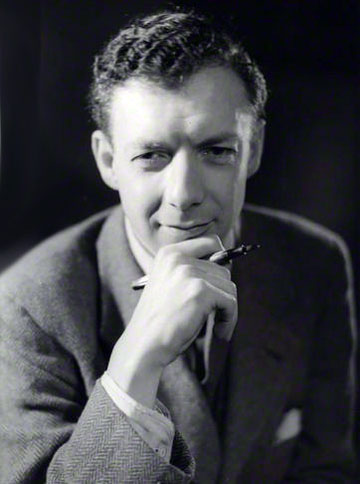
Benjamin Britten, c. 1950s; photographer unknown; courtesy of operanews.com
Benjamin Britten is one of the great composers of the twentieth century. He is also one of those rare individuals who was able to live fully and creatively the life he fervently wished for as a child. Musical composition was his desired life; in the spirit of Puccini’s great aria from Tosca, “Vissi d’Arte,” his was a life in art, and art in life.
A child may be filled with desire to express objectively the music that is in his mind, and because music is so demanding an art form it may take years to master even the technical and aesthetic requirements. Finally, though, a composer will be judged on something more than his skill and the beauty of what is created. For Britten to become a great composer, which was his conscious desire, his music would need, in the words of Indian musicologist Anupam Mahajan, to be “a realization of the essence of existence beyond the routine life of man.” (Mahajan 1989, p. 13)
I believe that Britten achieved something of that essence in much of his music. Britten was a composer whose music communicated his deepest moral convictions, his fundamental truths in life. Because these were not consonant with the world around him, his music became the language of a prophet who lived, as prophets often do, on a fragile boundary between the Wilderness and the Ruler’s Court. The compelling beauty of his music made it possible for Britten to navigate this line and be heard by many people who preemptively disagreed with his message. His subjects, so relevant to his own and today’s world, were the subjects of many prophets before him: Violence, Injustice, Innocence Betrayed, the Scapegoat, and most of all, War.
Read the rest of this article »
by Ken Butigan

Cover of Berrett-Koehler edition; courtesy of the publisher
The Nonviolence Handbook: A Guide for Practical Action— a new volume by long-time peace and nonviolence scholar Michael Nagler published this month by Berrett-Koehler — offers the reader a crisp articulation of the dynamics, principles and contemporary application of Gandhian nonviolence that is both brief and clear. A scant 84 pages, including footnotes and an index, this publication really is a handbook in the classic sense: a short compendium of concise information about a particular subject, a type of reference work, a collection of instructions, and something “small enough to be held in the hand.” Nagler’s new book is, in this sense, a handy summary of the workings of nonviolent change and how it can transform our lives and our world.
In the interest of full disclosure, let me say from the outset that I was Nagler’s teaching assistant years ago and he, in turn, served on my degree committee in graduate school. I have always found his work a powerful contribution to nonviolent studies. I have used his publications in my teaching, including The Search for a Nonviolent Future, which I consider to be one of the best books ever written on the power of nonviolence. Even before meeting Nagler, though, his work influenced me strongly. As a neophyte activist in the 1980s I happened upon his America Without Violence, which opened up for a social change newbie a vision of nonviolence grounded in humanity’s potential. It helped strengthen my hope that enduring nonviolent transformation was possible.
Read the rest of this article »
by Peter van den Dungen

Logo, Peace Museum, Bradford, UK; courtesy of www.peacemuseum.org.uk
In his essay Perpetual Peace (1795), Kant made it clear that we are called upon to make strenuous efforts for building a world without war. Neither the world in which we find ourselves, nor the human beings that are born into it, are inherently peaceful. However, Kant believed that rational and moral progress was possible, on the part of individuals as well as societies, and that – in the distant future – a global, cosmopolitan world order of peace and justice could emerge. In an earlier essay, Idea for a Universal History from a Cosmopolitan Point of View (1784), he wrote that future generations ‘will naturally value the history of earlier times … only from the point of view of what interests them, i.e., in answer to the question of what the various nations and governments have contributed to the goal of world citizenship, and what they have done to damage it.’ In the eighth thesis of this essay he asserted that the Idea (for a universal history from a cosmopolitan point of view) ‘can help, though only from afar, to bring the millennium to pass.’ Almost two hundred years later, Kenneth E. Boulding, one of the pioneers of modern peace research, argued likewise the need for ‘universal history’, a new kind of history writing, teaching, and learning that should replace the traditional, narrow, nationalist approach – a main ingredient in the complex of factors leading to war. The narrow geographical perspective is only one aspect of traditional history which is also characterised by gender, race, and religious bias. New kinds of history, more inclusive and objective, emerged only in the last century as a consequence of the emancipation of increasing numbers and categories of people (women, black, gay, disabled). It is also in this context, and especially against the background of two world wars, the development and use of atomic weapons, the Cold War, and the protest movements that have sprung up against them, that a specialised field of history has emerged: peace history.
Read the rest of this article »
by Robert Ellsberg
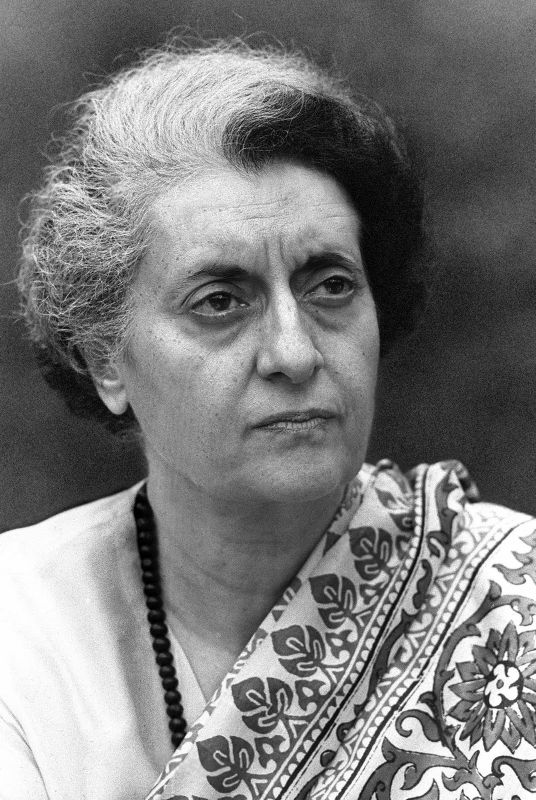
Indira Gandhi, c. 1965; photographer unknown; courtesy of bollyworldbits.blogspot.nl
The Indian consulate in New York City occupies a stately building off of Fifth Avenue. I was arrested for distributing leaflets marking the first anniversary of Indira Gandhi’s State of Emergency. I was charged with disorderly conduct and obstruction of government administration. “Which government might that be?” I asked hopefully. “Whose jail are you in, buddy?” replied my arresting officer.
At that time, in India, tens of thousands of men and women were in jails and detention camps, among them the most active segments of the nonviolent Gandhian movement, for having committed crimes not much different than my own.
And now, more than two years later, the dark days in India, which began on June 26, 1975, have passed. In the spring of 1976, Mrs. Gandhi gave six-weeks notice that free elections would be held, scheduled for mid-March. The announcement itself came as no surprise; Indira’s power was confidently entrenched, most of the provisions of emergency rule (which was maintained throughout the election) were long since codified in law, or established in fearful precedent. It was obvious that elections under these conditions would accomplish no more than to legitimize and cement the existing constitutional dictatorship.
Read the rest of this article »
by Robert Ellsberg

Farm boycott swaraj poster; artist unknown; courtesy of dehligreens.com
“Sometimes a man lives in his dreams. I live in mine, and picture the world as full of good human beings—not ‘goody-goody’ human beings. In the socialist’s language there will be a new structure of society, a new order of things. I am also aspiring after a new order of things that will astonish the world. If you try to dream these daydreams you will also feel exalted as I do.” M. K. Gandhi
On the day of India’s independence, the consummation of a lifetime of struggle, Gandhi did not participate with other Congress leaders in the celebration. That day for him was an occasion of deep sorrow, which he observed by fasting. India’s future lay in the hands of those who were determined to pursue the path of industrial and military strength, centralization of the means of production and political power, men who believed that India could be remade from the top down.
As nonviolent revolution could not be the equivalent of violent revolution without the violence, but something qualitatively different in assumptions and goals, true swaraj (self-rule) could not be the parasitic apparatus of bureaucratic administration minus the British. Gandhi’s conception of swaraj was quite different: not the goal of an Indian nationalist government, but a process that would replace the state by the self-rule of each individual. As the best function of school should be to enable the student to educate himself, the role of government, as Gandhi saw it, was to make itself more and more unnecessary, by enabling people to do without it; not simply by eliminating its functions, but by encouraging self-reliance, personal responsibility and devotion to social welfare, while dispersing the means of administration among radically decentralized institutions through which the masses might learn the art of self-management. A true Independence Day could not be represented by the arbitrary date of British submission, but that time when each individual was self-governing and self-sufficient for his/her basic needs. Swaraj was the rule of nonviolence, order arising from freedom, not to pursue selfish passions and desires, but to submit voluntarily to the law of one’s being. That freedom was not a privilege or right guaranteed by constitution but a perpetual call to the soul. Swaraj was thus a moral principle, which embodied certain political principles and economic conditions: decentralism, village autonomy, self-sufficiency, voluntary poverty, and bread labor; it was a philosophy of work.
Read the rest of this article »
by Eileen Egan
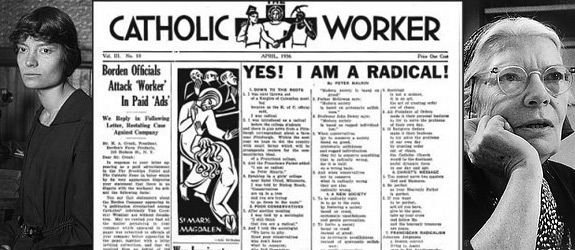
Photo collage with CW masthead; artist unknown; courtesy of the CW
Nonviolence has a negative, passive ring to it that its adherents have been attempting to erase by prefixing to it the adjective “militant.” Regrettably, it is the only current term in general usage in English. It corresponds to the Gandhian ahimsa, or non-injury, and carries the necessary message of unwillingness to injure or kill other creatures. For Western adherents of ahimsa or nonviolence who are not vegetarians, the unwillingness applies only to humans. The nonviolent person is not supine before an insane attack. The defense of a third party often involves the interposing of the body of the nonviolent person, with no intent of inflicting harm. Gandhi coined the term satyagraha, or truth-force, to describe a nonviolent campaign for human rights and freedom. As “God is Truth and Truth is God” in Gandhi’s thinking, the inference was that only godly or moral force would be employed by satyagrahi, participants in the nonviolent movement. Martin Luther King’s term, “soul-force” is a satisfactory one for most adherents of nonviolence.
Read the rest of this article »
by William J. Jackson

Ahimsa logo; artist unknown; courtesy of thisisourstory.net
Examples of Nonviolence in Action
Ahimsa (the Sanskrit word meaning the practice of “being un-hurtful,” the way of “harmlessness” or “non-violence”) is an ancient yoga practice. Patanjali, in his Yoga Sutras, around 2200 BCE wrote that “Refusal of violence, refusal of stealing, refusal of covetousness, with telling truth and continence, constitute the Rules” of the practice of Yoga. (1) A translator of the Yoga Sutras, Swami Purohit, commented that, “refusal of violence is love for all creatures.” In the text this sutra follows a discussion of karma, and the problem of an individual creating impediments to his liberation, as well as a discussion of the wisdom of avoiding the future misery entailed by actions of violence, a teaching, which is part of the beliefs about karma.
The Yoga Sutras text also states that, “When non-violence is firmly rooted, enmity ceases in the yogi’s presence.” (2) This ancient teaching reminds me of the last part of Gandhi’s life, when he traveled from village to village in parts of India where there were disturbances caused by communal conflicts. He had long before vowed to take the pacifist path, and his gentle presence inspired villagers to have faith in the power of nonviolence.
Read the rest of this article »














